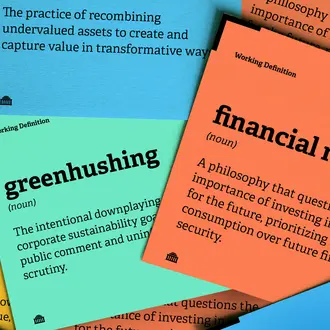Credit: Rob Dobi
A new study published in Science finds that false news online travels “farther, faster, deeper, and more broadly than the truth.” And the effect is more pronounced for false political news than for false news about terrorism, natural disasters, science, urban legends, or financial information.
Falsehoods are 70 percent more likely to be retweeted on Twitter than the truth, researchers found. And false news reached 1,500 people about six times faster than the truth.
The study, by Soroush Vosoughi and associate professor Deb Roy, both of the MIT Media Lab, and MIT Sloan professor Sinan Aral, is the largest-ever longitudinal study of the spread of false news online. It uses the term “false news” instead of “fake news” because the latter “has lost all connection to the actual veracity of the information presented, rendering it meaningless for use in academic classification,” the authors write.
To track the spread of news, the researchers investigated all the true and false news stories verified by six independent fact-checking organizations that were distributed on Twitter from 2006 to 2017. They studied approximately 126,000 cascades — defined as “instances of a rumor spreading pattern that exhibits an unbroken retweet chain with a common, singular origin” — on Twitter about contested news stories tweeted by 3 million people more than 4.5 million times. Twitter provided access to data and provided funding for the study.
The researchers removed Twitter bots before running their analysis. They then included the bots and ran the analysis again and found “none of our main conclusions changed.”
“This suggests that false news spreads farther, faster, deeper, and more broadly than the truth because humans, not robots, are more likely to spread it,” the researchers wrote.
So what to do? In an interview for the MIT Sloan Experts video series, Aral said possible solutions include labeling fake news much as food is labeled, creating financial disincentives such as reducing the flow of advertising dollars to accounts that spread fake news, and using algorithms to find and dampen the effect of fake news.
But he cautioned that none of those solutions is tested.
“We do not know enough about what’s going on. We have to do more research about how false news spreads, why do people spread false news, how are bots involved or not involved,” he said.
Other findings from the study include:
- The amount of false news on Twitter is increasing and spikes during key events, like the U.S. presidential elections of 2012 and 2016.
- While one might think that characteristics of the people spreading the news could explain why falsity travels with greater velocity than the truth, the data revealed the opposite. Users that spread false news had significantly fewer followers, followed significantly fewer people, were significantly less active on Twitter, were “verified” significantly less often, and had been on Twitter for significantly less time. Falsehood diffused further and faster despite these differences, not because of them.
- The data support a “novelty hypothesis.” False news was more novel than the truth and people were more likely to share novel information.
- False rumors also inspired replies expressing greater surprise, corroborating the novelty hypothesis, and greater fear and disgust. The truth, on the other hand, inspired greater sadness, anticipation, joy, and trust. These emotions, expressed in reply to falsehoods, may shed light on what inspires people to share false news.



